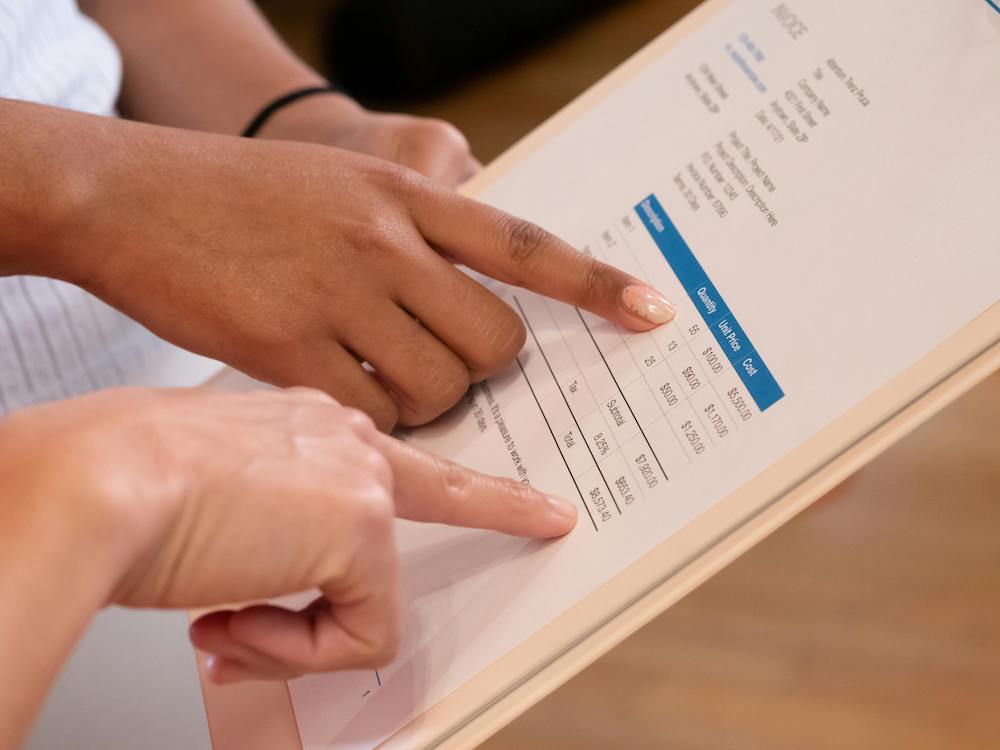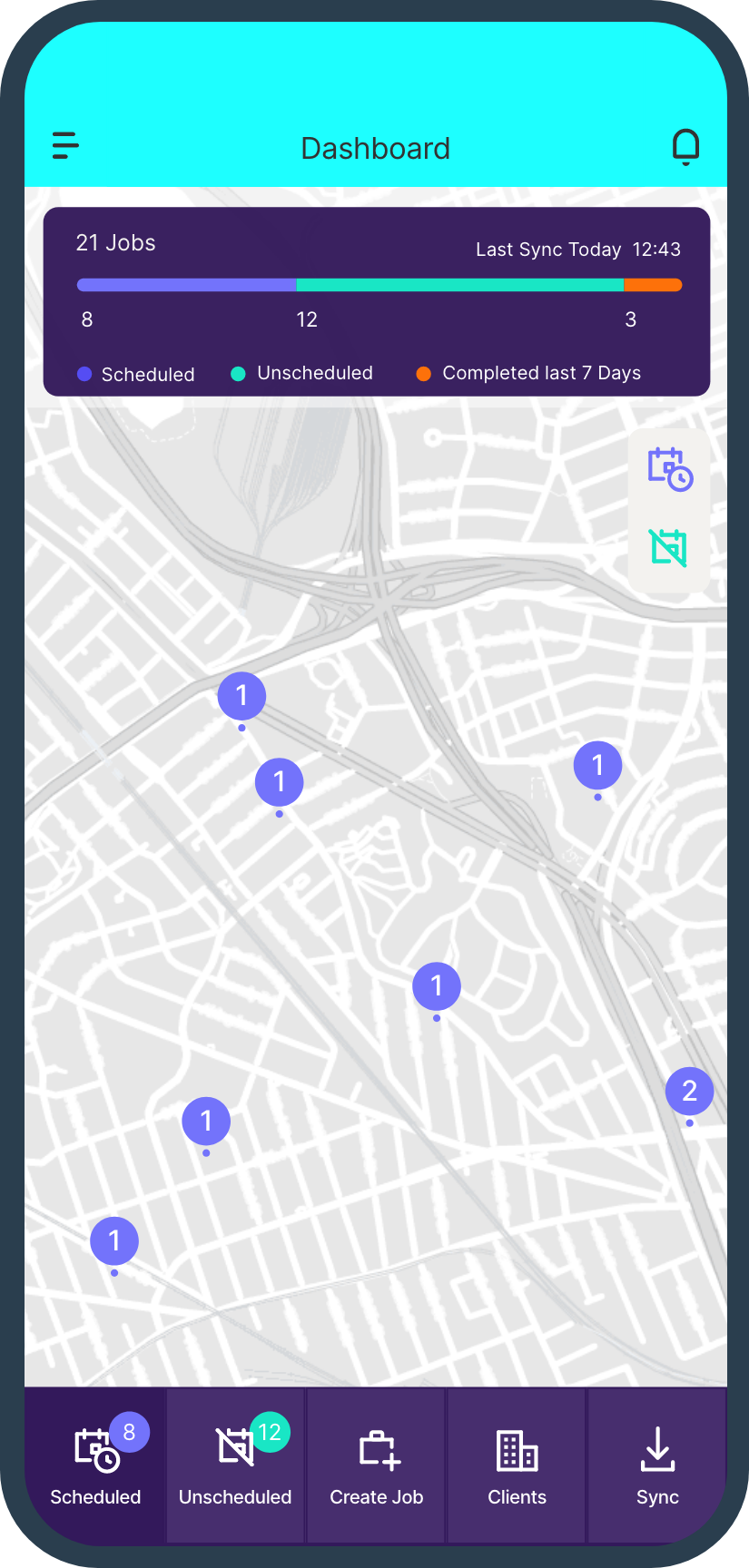In the dynamic realm of plumbing businesses, an efficient invoicing approach is not just a financial formality but a cornerstone for sustained success. The ability to streamline invoicing processes not only ensures timely payments but also cultivates a professional image and fosters client trust.
How often have you found yourself chasing overdue invoices in recent months? Is your accounts team sifting through spreadsheets and paperwork each month to track down which customers are up to date with their payments? To maintain the profitability of your plumbing business, a robust invoicing process and strategic estimation are essential. The invoicing procedure in plumbing mirrors that of many other field services. Your field team assesses the work for a customer, an estimate is formulated, and a mutually agreed-upon date is set for the work to commence. Once the job is finished, an invoice is issued to the customer for payment. Any hitches in this process can lead to cash flow challenges, directly impacting your bottom line.
In this article we will look at optimising billing workflows to embracing cutting-edge software – discover how these key elements can significantly enhance your invoicing efficiency, setting the stage for improved financial management and overall growth in your plumbing business.
Effective Tips for Optimising Invoicing Workflows
In the realm of business efficiency, optimising invoicing workflows is a pivotal step towards smoother financial operations in your plumbing business. A streamlined invoicing process not only enhances productivity but also ensures timely and accurate financial transactions. Here are some effective tips to optimise your invoicing and billing workflows:
Embrace Digital Invoicing
Transitioning to digital invoicing eliminates the need for manual paperwork, reduces the likelihood of errors, and accelerates the invoicing process. Use specialised invoicing software to create, send, and track invoices efficiently.
Standardise Invoicing Templates
Develop standardised templates for your invoices. Consistent formatting not only reinforces your brand identity but also simplifies the review and payment process for your clients.
Automate Recurring Invoices
For services provided on a regular basis, automate recurring invoices. This reduces the manual effort required for repetitive tasks, ensuring accuracy and timely invoicing.
Implement Clear Payment Terms
Clearly communicate payment terms on your invoices. This includes due dates, accepted payment methods, and any applicable late fees. Clarity in payment terms facilitates prompt settlements and minimises misunderstandings.
Utilise Online Payment Gateways
Integrate online payment gateways to facilitate quick and secure transactions. Offering multiple payment options increases convenience for clients and accelerates your cash flow.
Establish a Systematic Approval Process
Implement a systematic approval process for creating and sending invoices. This ensures that each invoice undergoes a thorough review before reaching the client, reducing the likelihood of errors.
Track Invoice Status
Use tracking features within your invoicing software to monitor the status of each invoice. This enables you to follow up on overdue payments promptly and maintain a proactive approach to financial management.
Regularly Update Client Information
Keep client information up to date. Accurate contact details and billing information minimise the chances of invoice delivery issues and ensure that clients receive invoices in a timely manner.
Invest in Training
Train your team on the optimal use of invoicing tools and platforms. Familiarity with the features and functionalities of your chosen software enhances efficiency and reduces the likelihood of errors.
Review and Improve
Conduct regular reviews of your invoicing workflows to identify areas for improvement. Solicit feedback from your team and clients to refine processes continuously.
By implementing these tips, plumbing businesses can enhance the efficiency of their invoicing workflows, leading to improved cash flow, reduced errors, and increased client satisfaction. The optimisation of invoicing processes contributes significantly to overall business effectiveness and financial stability.
Frequently Asked Questions about Plumbing Business Invoicing
Navigating the intricacies of plumbing invoicing is a common concern for both novices venturing into their own plumbing business and seasoned professionals aiming to refine their practices. To provide clarity and guidance, this compilation of frequently asked questions (FAQs) addresses key aspects of plumbing invoicing, offering insights and solutions to common queries within the industry. Whether you’re seeking to optimise your invoicing process or addressing specific concerns, this FAQ section aims to be a valuable resource for plumbing professionals at every stage of their business journey.
1. What information should be included in a plumbing invoice?
A comprehensive plumbing invoice typically includes details such as service description, labor charges, materials used, taxes, payment terms, and contact information for both the plumber and the client.
2. How do I ensure accuracy in my plumbing invoices?
To maintain accuracy, double-check all service details, itemised costs, and client information before issuing an invoice. Utilising specialised invoicing software can also help automate and reduce errors in the process.
3. What is the best invoicing software for plumbing businesses?
Several invoicing software options cater specifically to plumbing businesses, including platforms like QuickBooks, FreshBooks, and Klipboard. The choice depends on your business needs and preferences.
4. How can I streamline the plumbing invoicing process?
Streamlining invoicing involves automating repetitive tasks, utilising templates, and employing software that integrates seamlessly with your workflow. This not only saves time but also reduces the risk of errors.
5. What is the importance of clear payment terms in plumbing invoices?
Clear payment terms, including due dates and accepted payment methods, help manage client expectations and ensure timely payments. This transparency can prevent payment delays and enhance cash flow.
6. How do I handle overdue invoices in the plumbing business?
Establish a systematic follow-up process for overdue payments, which may include sending reminders and implementing late fees. Communicate with clients to address any issues promptly and find mutually agreeable solutions.
7. Should I provide estimates before invoicing for plumbing services?
Yes, offering estimates before starting a plumbing job is crucial. It sets clear expectations for the client regarding costs, helping to avoid disputes later on. Ensure estimates are detailed and agreed upon by both parties.
8. What are common invoicing mistakes to avoid in plumbing businesses?
Common invoicing mistakes include inaccuracies in service details, miscalculations, and failing to clearly communicate payment terms. Regularly review invoices for errors before sending them to clients.
9. Can I use mobile apps for plumbing invoicing?
Yes, many mobile apps are specifically designed for plumbing invoicing, allowing you to create and manage invoices on-the-go. These apps, such as Klipboard, often integrate with other business tools, enhancing overall efficiency.
10. How can plumbing businesses ensure data security in their invoicing process?
Choose invoicing software with robust security features, use secure payment gateways, and regularly update passwords. Additionally, educate your team on cybersecurity best practices to minimize the risk of data breaches.
Embracing Cutting-edge Plumbing Business Software
In the ever-evolving landscape of business operations, embracing cutting-edge software has become pivotal for efficiency, accuracy, and overall success. One such innovative solution making waves in field service is Klipboard. This advanced software brings a multitude of benefits to businesses aiming to optimise not only their invoicing processes but their entire workflow.
Klipboard offers a comprehensive suite of features designed to streamline workflows, enhance communication, and elevate overall operational efficiency. From real-time job tracking and scheduling to automated invoicing and client management, Klipboard is tailored to meet the diverse needs of modern businesses.
By incorporating Klipboard into your operations, you can bid farewell to the inefficiencies associated with traditional methods. The software facilitates seamless communication between field and office teams, ensuring everyone is on the same page in real-time. This not only reduces delays but also minimises the likelihood of errors, contributing to a more accurate and streamlined invoicing workflow.
Moreover, Klipboard’s automated invoicing capabilities revolutionise the billing process. With the ability to generate invoices promptly upon job completion and with integrated card payments, plumbing businesses can accelerate the payment cycle and improve cash flow. This feature is particularly advantageous for service-oriented industries like plumbing, where timely invoicing is crucial for maintaining financial stability.
In addition to operational benefits, embracing cutting-edge software like Klipboard showcases a commitment to technological advancement, positioning your business as forward-thinking and adaptable. Clients and stakeholders increasingly appreciate organisations that leverage innovative tools to enhance service delivery and overall efficiency.
Summary
In conclusion, the endeavor to elevate your invoicing approach in your plumbing business is not merely about enhancing financial transactions; it’s about optimising operational efficiency, fostering client trust, and ultimately driving business growth. By implementing strategic invoicing practices, leveraging innovative software solutions like Klipboard, and embracing best practices tailored to the plumbing industry, you position your business for sustained success in a competitive market landscape.
Remember, effective invoicing is not just about generating bills; it’s about delivering value and professionalism to your clients while ensuring the financial health and stability of your business. As you continue to refine your invoicing approach, may these insights serve as a guide to achieving excellence in every aspect of your plumbing operations.



